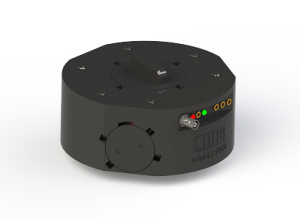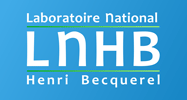The measurement of radiopharmaceuticals used in nuclear medicine services is generally done through calibrated dose calibrators linked to the SI by the LNHB. Short half-life radionuclides, such as 11C (T1/2 = 20 min) or 15O (T1/2 = 2 min), are produced in situ and are difficult to transport for calibration in a primary laboratory. For these reasons, it was necessary to develop a portable primary measuring device that could be used on site.
 Achievements:
Achievements:
Design of the portable system.
Optimization for the measurement of short half-life radionuclides:
– use of compact photomultipliers,
– integration in a polymer mechanical system,
– manufacturing by fused deposition modeling (3D printing),
– integration of miniature acquisition electronics, coupled to a laptop PC.
Major results:
Validation of a prototype by comparison with the laboratory’s TDCR primary measurement system.
The next developments should make it possible to couple this measuring device with a microfluidic sampling system to limit the irradiation dose to operators and to limit the quantities of solution that are consumed for quality control.
